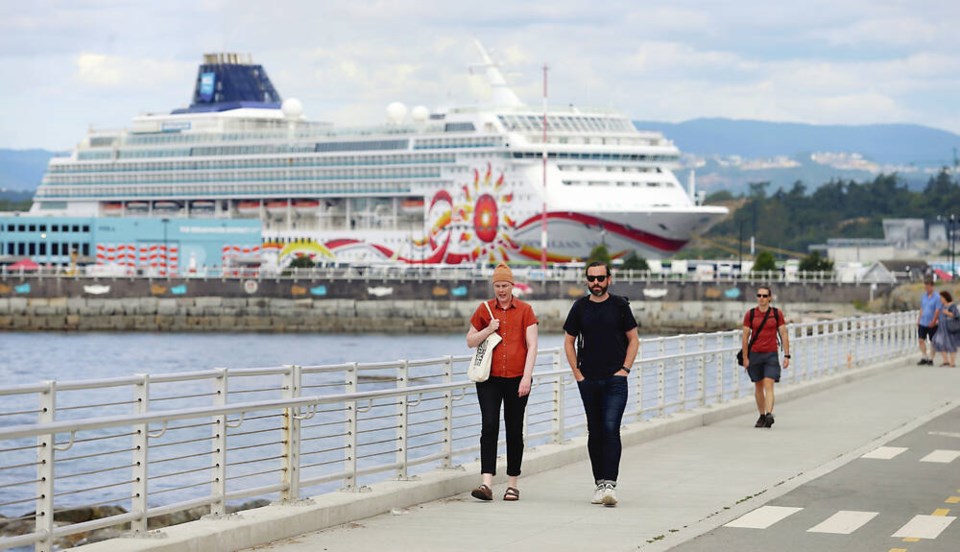A commentary by the president of the James Bay Neighbourhood Association.
Despite efforts to reduce regional waste generation, the Hartland Landfill is filling faster than planned. The Capital Regional District has noted that the amount of waste headed to Hartland is “trending significantly in the wrong direction.”
Should the region be encouraging, or even accepting, tonnes of cruise ship foreign wastes?
A simple action can be taken to help reduce the volume of waste directed to the Hartland Landfill: stop accepting foreign cruise ship waste.
Our region has been a cruise ship destination since the 1990s. The number of ships increased from 34 in 1999 to 267 in 2019, with more than 330 ships expected in 2022. The cruise ships dock at Ogden Point in James Bay, the most densely populated residential neighbourhood in the region.
A significant negative impact of cruise tourism is the offloading of solid and liquid wastes at Ogden Point. Tonnes of waste are taken to Hartland Landfill.
This waste represents a small percentage of Hartland’s annual tonnage, and a small percentage of all the waste materials removed from the ships. In addition, recyclables are transported to destinations on the mainland.
Liquid and hazardous wastes are transported up-Island. Most materials appear to be processed elsewhere, but our region and its residents bear the negative impacts of large trucks, including tankers, transporting the tonnes of wastes.
In the early 1990s, the CRD board made the difficult decision to drain Heal Lake to make room for our garbage. The board decided to manage garbage within our region and restricted the disposal of solid waste at Hartland Landfill originating from generators outside the region.
At the same time, the board committed to innovative new waste reduction initiatives.
In 2021, the James Bay Neighbourhood Association began its Fair Sailing initiative. Fair Sailing, which advocates the regional “locals first” approach to cruise tourism, asks why the CRD continues to accept foreign cruise ship waste at Hartland Landfill when it is already pressured by regional demands.
This is contrary to local and regional waste and greenhouse gas emission reduction efforts and goals. How can the CRD or its constituent municipalities expect local residents and businesses to reduce, reuse and recycle to save landfill space and simultaneously accept foreign cruise ship waste?
Canada’s International Waste Directive clearly states that cruise ships are not mandated to offload international wastes in Canada. It also outlines that approval for a disposal site will only be renewed if the site wishes to remain eligible – so the CRD board has a choice.
Canada has a duty to ensure the provision of adequate reception facilities for ships’ wastes in ports as part of the international MARPOL protocol. Fair Sailing questions the need for cruise ships to offload wastes in Victoria as the ships appear to have sufficient storage capacity.
In 2021, Canada prohibited cruise calls due to the COVID pandemic. Cruise lines continued to sail from Seattle to Alaska and offloaded their wastes in U.S. ports. They have proven options besides offloading wastes in Victoria.
On Wednesday, the CRD board is expected to vote on a recommendation by its environmental services committee to increase the tipping fee for international high risk cruise ship waste to $500 per tonne.
Fair Sailing instead asks the CRD to stop accepting all foreign cruise ship wastes at Hartland Landfill.
For more information, go to fair-sailing.com.



